This blog entry details how I designed and developed a fly so tough it was virtually indestructible and can be used again and again at the New Zealand River. So I had named it the New Zealand River Special Fly.
As mentioned many time before, Peacock Basses in the New Zealand River comes in great numbers on days when the conditions are right. During these times they are ferocious, hitting the fly hard and their fights even harder. Fly fishermen can expect to catch and release as many as 30 Peacock Basses in a period of 1 hour. Often, the fly could not take such abuse and lost their dressing and become Botak(Bald). But I lost most of them through broken tippets because I was too excited to change the weaken tippet when fishing in such a frenzy.
My time in the old Merchant Navy came in useful. When I was a cadet, the Boatswain would always teach me important seamanship knots. Some knots, like those used for staging and the bosun’s chair, I have to know because if I don’t I could ended up dead. Others like the flat knots which I had adapted for use on the New Zealand River Special Fly are mostly for decorative purposes. They are also used extensively in macrame and scoubidou. As a cadet, I had knotted and weaved decorative flowerpot hangers and curtain ties for the Captain’s cabin and the Wheel House using these macramé and scoubidou knots. I didn’t expect them to become useful when tying flies. Indestructible flies, that is.
I chose to use monofilament fishing lines because I found them very tough and can withstand a lot of abuse even from the sharp teeth of the tomans. My first attempt was to tie a fly which will look like a shrimp. I had the sebaraus at the end of the cement block in mind when I started fiddling with the design. Well, the first fly didn’t even look like a shrimp as you can see in the photograph. But the tilapias and juvenile Peacock Basses loved them. The sebaraus as usual ignored them. Uncle Chui was so impressed that he pestered me to teach him how to tie the flat knots to weave the fly. He improvised by using monos of different colours and he had knotted some very beautiful flys with bead eyes. Eric Tan and myself had the privileged of testing his flies at Mandai Pond successfully.
I finally tied one which looked more like a shrimp, but my son said shrimps don’t have eyes that long and my wife was laughing so loud the whole neighbourhood could hear her. Then there was another one which I gave to Jimmy and it swam sideways and backwards. He finally lost it to the bushes. The ones that swam correctly was catching fish and was withstanding the abuse from them Peacock Basses.
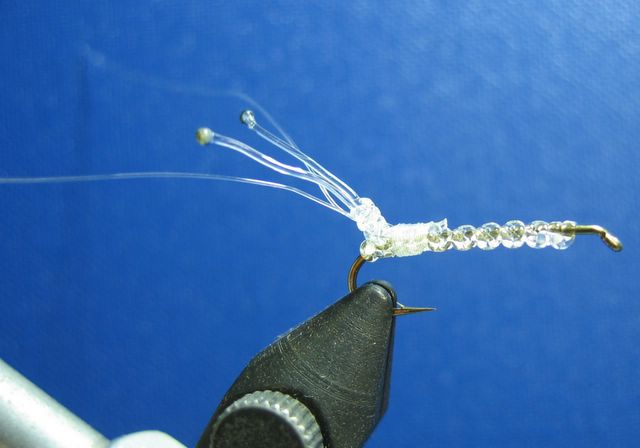
As a lousy caster, my leader occasionally bunch up and “char-bee-hoon”. There was one instance when the bunch of mono “char-bee-hoon” ended up at the hook bend while I was stripping quickly to entice a pod of Peacock Basses. The fastest Peacock Bass was hook, but the rest of the fishes keep hitting at the bunch of mono hanging outside the mouth of the hooked fish. I quickly released the Peacock Bass and purposely cast the “char-bee-hoon” into the frenzy. Again, the bunch of “char-bee-hoon” mono trigger strike after strike even though it was hanging out of a hooked Peacock Bass. Thinking it was coincidence, I tried it a few more time and the strikes continued. So clever me had a bright idea.
I designed the next New Zealand River Special Fly with a bunch of mono “char-bee-hoon” at the hook bend. Then I did some with the mono flat knots weaved over green fly tying threads. Some I did with the mono over orange fly tying knots. Some I added leaded weight to make them sink faster.
This fly is hot in the New Zealand River.
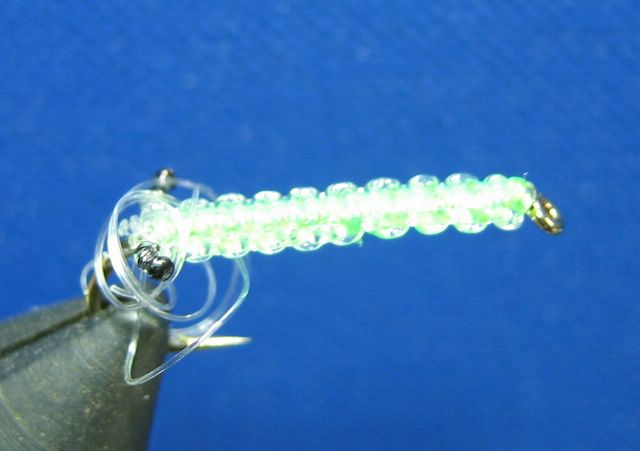
Maybe I should name this fly “The Char-Bee-Hoon Fly”.
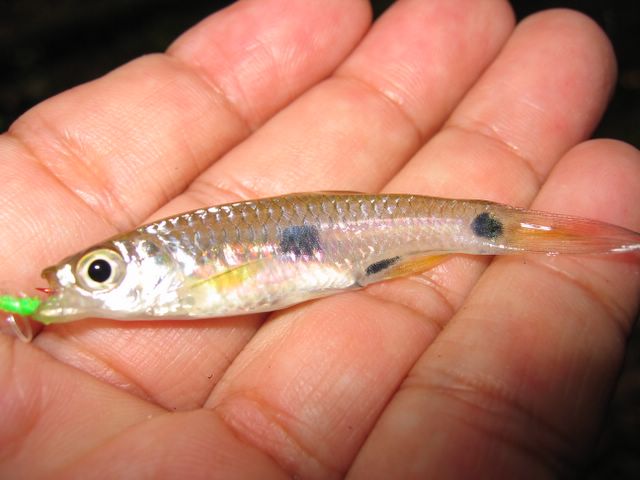
As mentioned many time before, Peacock Basses in the New Zealand River comes in great numbers on days when the conditions are right. During these times they are ferocious, hitting the fly hard and their fights even harder. Fly fishermen can expect to catch and release as many as 30 Peacock Basses in a period of 1 hour. Often, the fly could not take such abuse and lost their dressing and become Botak(Bald). But I lost most of them through broken tippets because I was too excited to change the weaken tippet when fishing in such a frenzy.
My time in the old Merchant Navy came in useful. When I was a cadet, the Boatswain would always teach me important seamanship knots. Some knots, like those used for staging and the bosun’s chair, I have to know because if I don’t I could ended up dead. Others like the flat knots which I had adapted for use on the New Zealand River Special Fly are mostly for decorative purposes. They are also used extensively in macrame and scoubidou. As a cadet, I had knotted and weaved decorative flowerpot hangers and curtain ties for the Captain’s cabin and the Wheel House using these macramé and scoubidou knots. I didn’t expect them to become useful when tying flies. Indestructible flies, that is.
I chose to use monofilament fishing lines because I found them very tough and can withstand a lot of abuse even from the sharp teeth of the tomans. My first attempt was to tie a fly which will look like a shrimp. I had the sebaraus at the end of the cement block in mind when I started fiddling with the design. Well, the first fly didn’t even look like a shrimp as you can see in the photograph. But the tilapias and juvenile Peacock Basses loved them. The sebaraus as usual ignored them. Uncle Chui was so impressed that he pestered me to teach him how to tie the flat knots to weave the fly. He improvised by using monos of different colours and he had knotted some very beautiful flys with bead eyes. Eric Tan and myself had the privileged of testing his flies at Mandai Pond successfully.
I finally tied one which looked more like a shrimp, but my son said shrimps don’t have eyes that long and my wife was laughing so loud the whole neighbourhood could hear her. Then there was another one which I gave to Jimmy and it swam sideways and backwards. He finally lost it to the bushes. The ones that swam correctly was catching fish and was withstanding the abuse from them Peacock Basses.

As a lousy caster, my leader occasionally bunch up and “char-bee-hoon”. There was one instance when the bunch of mono “char-bee-hoon” ended up at the hook bend while I was stripping quickly to entice a pod of Peacock Basses. The fastest Peacock Bass was hook, but the rest of the fishes keep hitting at the bunch of mono hanging outside the mouth of the hooked fish. I quickly released the Peacock Bass and purposely cast the “char-bee-hoon” into the frenzy. Again, the bunch of “char-bee-hoon” mono trigger strike after strike even though it was hanging out of a hooked Peacock Bass. Thinking it was coincidence, I tried it a few more time and the strikes continued. So clever me had a bright idea.
I designed the next New Zealand River Special Fly with a bunch of mono “char-bee-hoon” at the hook bend. Then I did some with the mono flat knots weaved over green fly tying threads. Some I did with the mono over orange fly tying knots. Some I added leaded weight to make them sink faster.
This fly is hot in the New Zealand River.

Maybe I should name this fly “The Char-Bee-Hoon Fly”.

Caught this wee rasbora at the Rifle Range some time ago, with a twig.
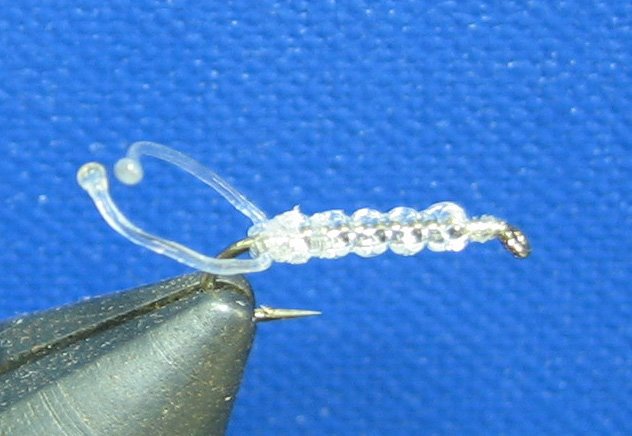
This was my first attempt to tie or weave a shrimp fly. Doesn't look like anything, but the tilapias at Mandai and Mandai Pond love it.

This fly catches peacock basses and fishermen alike. The success rate is lower compared with the "char-bee-hoon" fly.

This fly catches peacock basses. Closer look at the "cha-bee-hoon" at the hook bend. Somehow these bunch of mono always make the peacock basses go crazy and induced multiple strikes.

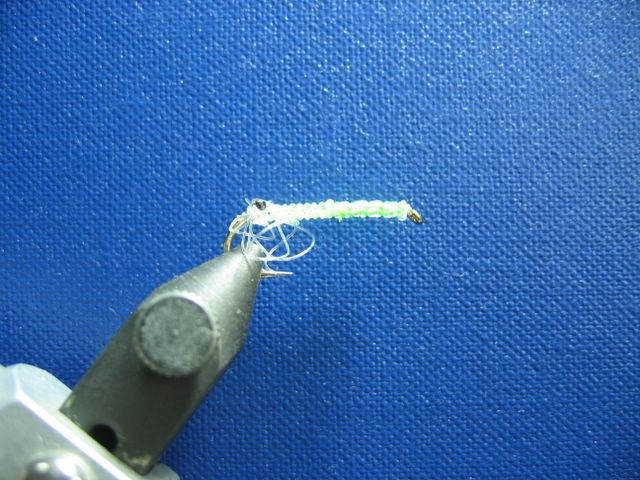

Click for bigger photo
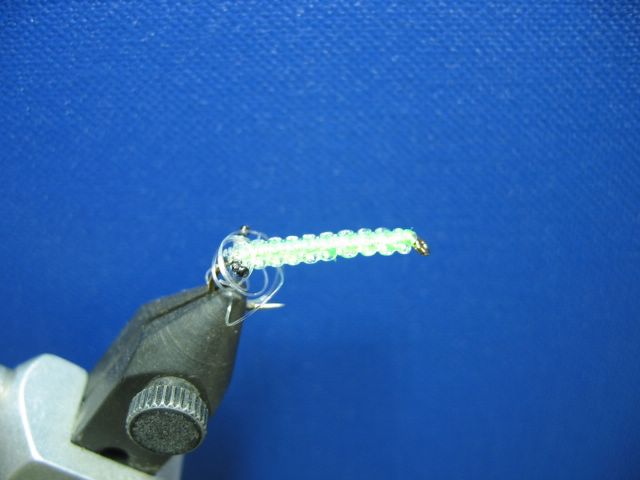
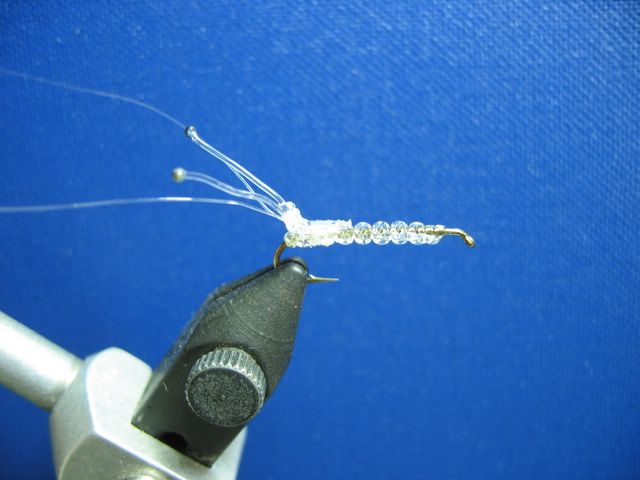

 Click for a Bigger Photo
Click for a Bigger Photo

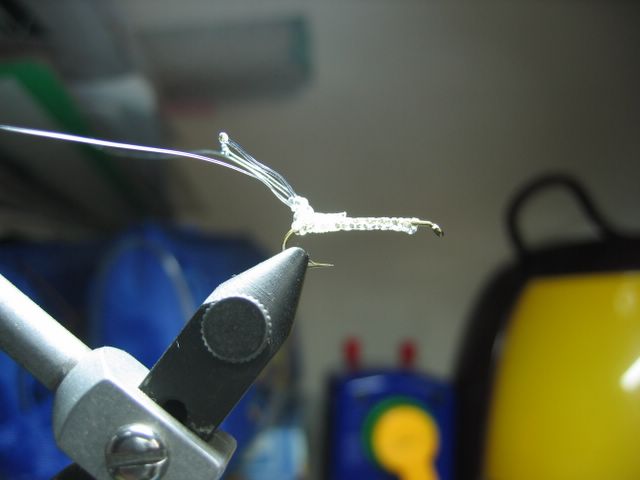
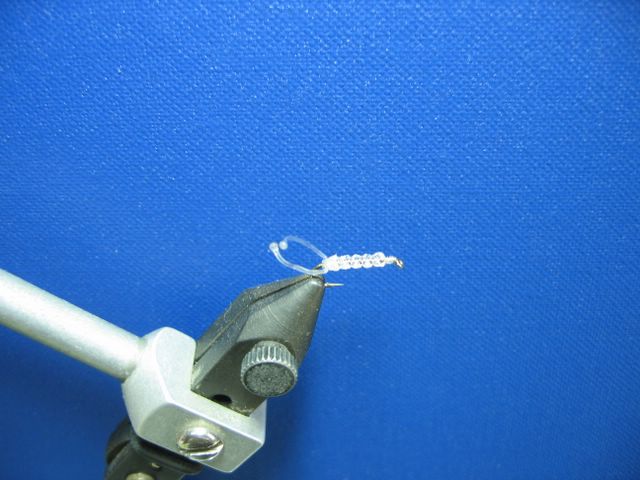
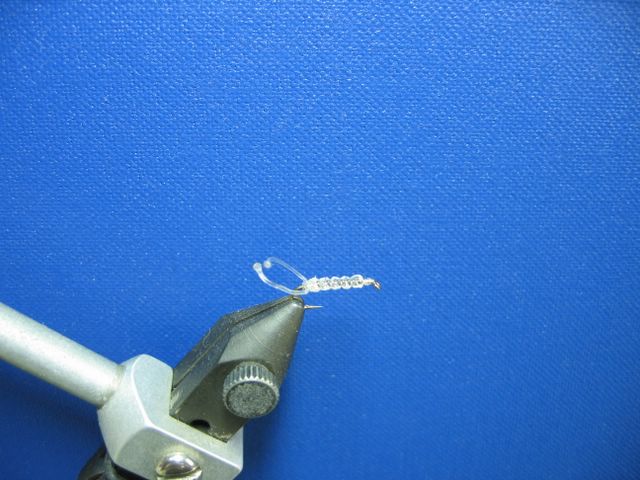
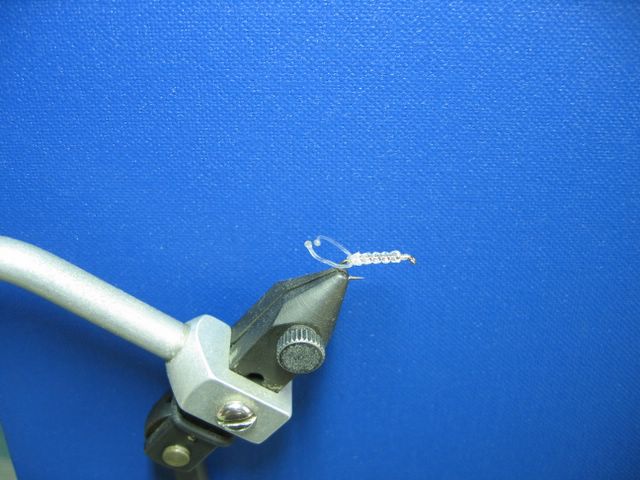
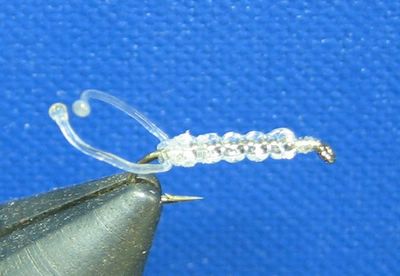
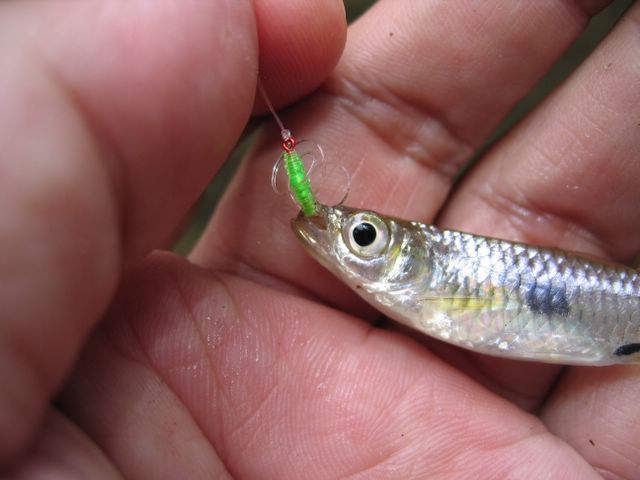

2 comments:
This is one of the most unique fly patterns I have seen - and I have seen a lot of patterns!
Nice work!
Thanks Opax.
Post a Comment